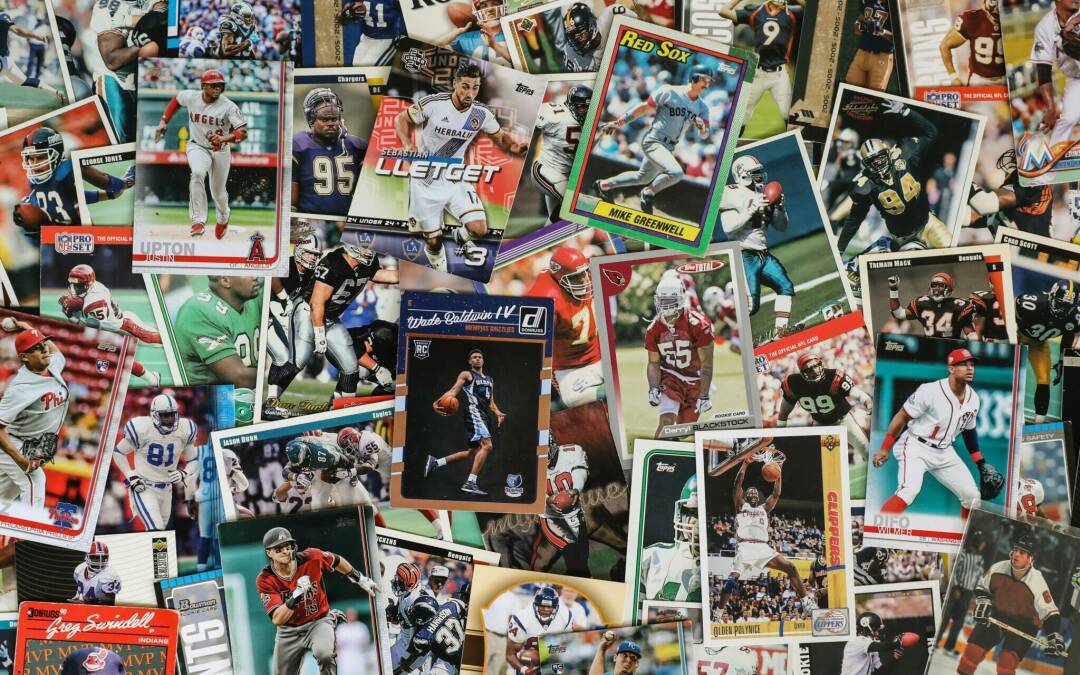The allure of owning something few others have drives many collectors to seek out the rarest and most valuable cards.
However, rarity isn’t always a straightforward concept, and many factors can influence a card’s scarcity. One of the most significant—and often misunderstood—factors is the print run.
The number of copies a manufacturer produces of a particular card, known as the print run, can dramatically impact its value in the marketplace.
Yet, despite its importance, print run information is often not readily available, leaving collectors to piece together clues and make educated guesses. Understanding print runs can give collectors a critical edge in identifying valuable cards, making informed purchases, and building a collection that appreciates over time.
What Is a Print Run? A Closer Look
At its core, a print run refers to the total number of copies of a particular card or set produced by the manufacturer. This figure can range from a few hundred in the case of extremely limited edition cards to several million for mass-produced, widely distributed cards. The size of a print run can be influenced by various factors, including the popularity of the franchise, the expected demand, and the intended rarity of the card.
- Print Run Categories Explained
- Mass-Produced Cards: These are cards that are produced in large quantities, often running into the millions. Examples include base cards in popular sets like Topps baseball cards or common cards in Pokémon booster packs. These cards typically have lower value due to their abundance.
- Limited Edition Cards: Limited edition cards are produced in restricted quantities, often as part of special promotions or commemorative sets. These cards are usually more sought after due to their scarcity.
- Serial-Numbered Cards: These cards are produced in a fixed quantity, and each card is individually numbered (e.g., 1/100). The serial number provides clear evidence of the card’s rarity, which can significantly enhance its value.
Understanding these categories is essential for collectors looking to assess the potential value of a card. While mass-produced cards may hold sentimental or gameplay value, they rarely appreciate in price. In contrast, limited edition and serial-numbered cards can become valuable assets over time, particularly if they are part of a popular set or feature a fan-favorite character.
Why Print Runs Matter: The Relationship Between Rarity and Value
The connection between print runs and card value is straightforward: the fewer copies of a card that exist, the rarer—and often more valuable—that card becomes. However, this relationship is also influenced by demand. A card with a low print run may still be relatively inexpensive if it is from an obscure or less popular set. Conversely, a card from a beloved series with a moderately low print run can see its value skyrocket.
- Supply and Demand Dynamics
- High Demand, Low Supply: Cards that are in high demand but have a limited print run tend to command the highest prices. This is because collectors are willing to pay a premium for the rarity, particularly if the card is essential to completing a set or features a popular character.
- Low Demand, Low Supply: Even if a card is rare, if it comes from a less popular set, it might not see significant value. However, this can change if the card or set gains popularity over time.
- High Demand, High Supply: In cases where a card is widely produced but highly sought after, prices may be higher than for other common cards, but they will generally not reach the levels of true rarities.
- Historical Examples of Print Runs Impacting Value
- Magic: The Gathering – Alpha Set: The Alpha set of Magic: The Gathering had a very limited print run of just 1,100 copies per card. This extreme scarcity, combined with the popularity of the game, has made Alpha cards some of the most valuable in the trading card world. The Black Lotus, in particular, has sold for hundreds of thousands of dollars.
- 1996 Pokémon Base Set – First Edition: The first edition of the Pokémon Base Set had a relatively low print run, especially compared to subsequent unlimited editions. Cards like the First Edition Charizard have become iconic in the hobby, with pristine copies selling for six-figure sums.
How to Track Down Print Run Information: Tips and Strategies
Given the impact of print runs on card value, it’s no surprise that collectors are eager to know this information. However, manufacturers don’t always make print run numbers public, particularly for mass-market cards. Nonetheless, several methods can help collectors estimate or discover print run data.
- Official Manufacturer Announcements
- Press Releases and Newsletters: Sometimes, card manufacturers will release print run information in press releases or newsletters, particularly for special edition or promotional sets. Signing up for these newsletters or following manufacturers on social media can keep you informed about upcoming releases and print run details.
- Product Information Sheets: Some manufacturers provide detailed product information sheets for distributors and retailers, which occasionally include print run data. These can sometimes be found online through hobby forums or directly from retailers.
- Serial Numbers and Limited Edition Markings
- Analyzing Serial Numbers: For cards that are serial-numbered, the print run is typically clear (e.g., 1/250). By comparing the serial numbers across different cards, collectors can confirm the total production quantity. Additionally, certain patterns in serial numbering, such as sequential distribution or clustering, can offer further insights into rarity.
- Unique Identifiers: Some cards feature unique identifiers or markings that can hint at print runs. For example, certain Pokémon cards from the early sets have a “shadowless” variant, which was part of a smaller print run before the card design was altered.
- Market Research and Auction Data
- Auction House Sales: High-profile auction houses often provide detailed descriptions of the cards they sell, including estimated print runs when known. Analyzing past auction results can help collectors gauge rarity and value.
- Online Marketplaces: Websites like eBay, TCGPlayer, and others can also provide clues. By observing how often a particular card appears for sale and tracking its sale prices over time, collectors can estimate its rarity. For instance, a card that rarely appears on the market is likely part of a limited print run.
- Collector Communities and Forums
- Hobbyist Knowledge: Long-time collectors often share print run information on forums and in social media groups. These communities can be invaluable for discovering details that aren’t officially published. Engaging with other collectors can also help cross-reference information and uncover new insights.
- Crowdsourced Databases: Some dedicated fans have created online databases that track known print runs, serial numbers, and other relevant details. These resources can be a goldmine for collectors looking to expand their knowledge.
The Influence of Print Runs on Modern Trading Cards
The concept of print runs continues to evolve in the modern trading card market. As the hobby has grown, so too have the strategies that manufacturers use to control card rarity. In recent years, we’ve seen a rise in ultra-limited print runs, such as one-of-one cards, which have only a single copy in existence. These cards are often chase cards in high-end products, driving significant interest and high prices.
- Ultra-Limited and One-of-One Cards
- Chase Cards: Chase cards are typically inserted into packs at very low odds, making them extremely difficult to pull. These cards can be limited to a single copy or a handful of copies, such as the one-of-one cards found in Topps’ high-end baseball card products. The allure of potentially pulling such a rare card drives demand for the product as a whole.
- Digital and NFT Cards: The advent of digital trading cards and NFTs (Non-Fungible Tokens) has introduced new dimensions to the concept of print runs. Digital cards can have their rarity and print run verified through blockchain technology, offering transparency that traditional physical cards sometimes lack.
- Manufacturer Trends and Their Impact
- Print-On-Demand Services: Some companies have started offering print-on-demand trading cards, where the number of cards printed depends entirely on the orders received during a specific period. This can create highly variable print runs, with some cards being extremely rare and others more common.
- Intentional Scarcity: Manufacturers are increasingly creating scarcity by deliberately limiting the print run of certain cards or sets. This strategy is often used in conjunction with special releases or anniversary sets to create a buzz in the market and drive sales.
Case Studies: Cards Whose Value Was Defined by Print Runs
Let’s examine a few case studies that highlight how print runs have defined the value of specific cards:
- 1986-87 Fleer Basketball – Michael Jordan Rookie Card
- The 1986-87 Fleer set is iconic, and Michael Jordan’s rookie card is one of the most sought-after cards in the hobby. Despite not being extremely rare, the print run of this card was limited by today’s standards. Its significance in the sport, combined with its moderately low print run, has made it a highly valued card. Mint condition versions have sold for over $700,000.
- Yu-Gi-Oh! – Tournament Black Luster Soldier
- This card was awarded to the winner of the 1999 Yu-Gi-Oh! National Championship in Japan, making it one of the rarest cards in the world. With only one copy produced, its value is incalculable, and it represents the ultimate example of how a minimal print run can result in extraordinary value.
Understanding print runs is more than just a numbers game—it’s about gaining insight into the factors that influence a card’s rarity and value. For collectors who aspire to build a valuable collection or invest wisely in the trading card market, mastering the concept of print runs is crucial.
By staying informed, utilizing community resources, and paying attention to trends, you can make more informed decisions, avoid common pitfalls, and identify cards that are likely to appreciate over time. Whether you’re chasing the next one-of-one masterpiece or simply looking to understand why some cards are worth more than others, print runs are a key piece of the puzzle.
Happy collecting!








